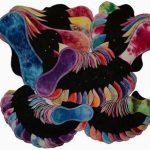Rethinking Abundance in the 21st Century
As far as abundance is concerned, the focus today is on meeting all material desires irrespective of the source of the desire – market/society driven or a true need. And the market/society rewards people who produce and consume the most.
In light of what we know about human nature, how our mind works and the global challenges we face, it is time to review what abundance can mean in the 21st century and how we can manifest it as individuals and society. The abundance that is true and absolute and designed for a thriving individual, society and the planet.
Here is an exploration on how we perceive abundance in our lives today and how we can manifest true abundance differently in future.
Material Abundance – Is this the kind of abundance we seek?
The current economic and social model is based on introducing new needs that can be fulfilled with more/never-ending consumption of goods and services. Almost every major study on the relationship between consumption and happiness unequivocally indicates that the level of happiness does not increase with higher levels of material consumption. In fact, it stays flat. See the chart below for data from the US, a country we aspire to become in terms of our consumption pattern.


Another major challenge with material consumption is that it is based on a linear process. The assumption to support consumption levels we aspire for fulfilled through a linear production system for seven and a half billion people on a finite planet is, to put it mildly, simply and totally flawed.
Material Abundance – Can we consider this?
Having established that the prevalent idea of material abundance is neither desirable nor feasible, what could material abundance mean going forward?
Proposed Definition: Material abundance is the gap between the ability to serve (produce goods and services that humans and the planet need) and the need to be served (consume goods and services produced by others).

Material abundance in this definition has the following characteristics:
- The focus here is on increasing the gap between the ability to produce and the need to consume and not on producing more and more or to live in scarcity
- The definition works at all levels of income and capacities provided basic needs are met. One does not need to have a lot of material things to feel materially abundant
- The model is scalable to all people in the world as the focus is on producing wholesome products and services and not on consumption
- The material abundance should include the interests of the individual, society and the planet. There should be recognition that individual thriving is only possible when the larger self (society and the planet is thriving)
- Considering the limits of the finite planet the focus for achieving abundance should shift to reducing the need to be served and consume.
- The model calls for the untangling desires created by market forces and society from the ones that truly make us happy. Voluntary reduction in consumption should be recognised and even rewarded. It implies a process of self-discovery and unlearning of prevailing social norms
- The ability to serve and produce should be wholesome with the larger interest of society and planet in mind
- The ability to serve and produce should comprise of a healthy and mandatory mix of time commitment, skills offered and a sense of responsibility based on individual capacity and passion
What are the other ways of experiencing abundance?
In order experience true and absolute abundance, let’s look at other ways of having it in our lives. Here is a framework for individual and society that can be integrated into a way of life and public policy.

Here is an illustration of how the framework can we used for an individual or society to evaluate levels of abundance. This will enable them to develop focused strategies and plans to in order to create abundance across all parameters. Note that the parameters listed here a flexible and can be further customised.

In conclusion, the present understanding of abundance is limited and needs to be reviewed.
Instead of focusing on more material abundance for all in the conventional sense, the community could focus on creating more possibilities for people to serve and produce more and seek the commitment from the community members in terms of time, skills and responsibility to achieve that. The community could also review at collective and personal levels of consumption and come up with ways to consume less. This is a much more sustainable and holistic way to creating material abundance in the community.
Achieving abundance does not necessarily mean more material consumption. On the contrary, material abundance can also be achieved through voluntary simplicity. In fact, that is the only truly global, inclusive and sustainable way.
Most of us and our communities are already brimming with abundance if we look carefully and use a more wholesome framework. Let’s reflect collectively on the word abundance and invent new ways of achieving it in the 21st century



